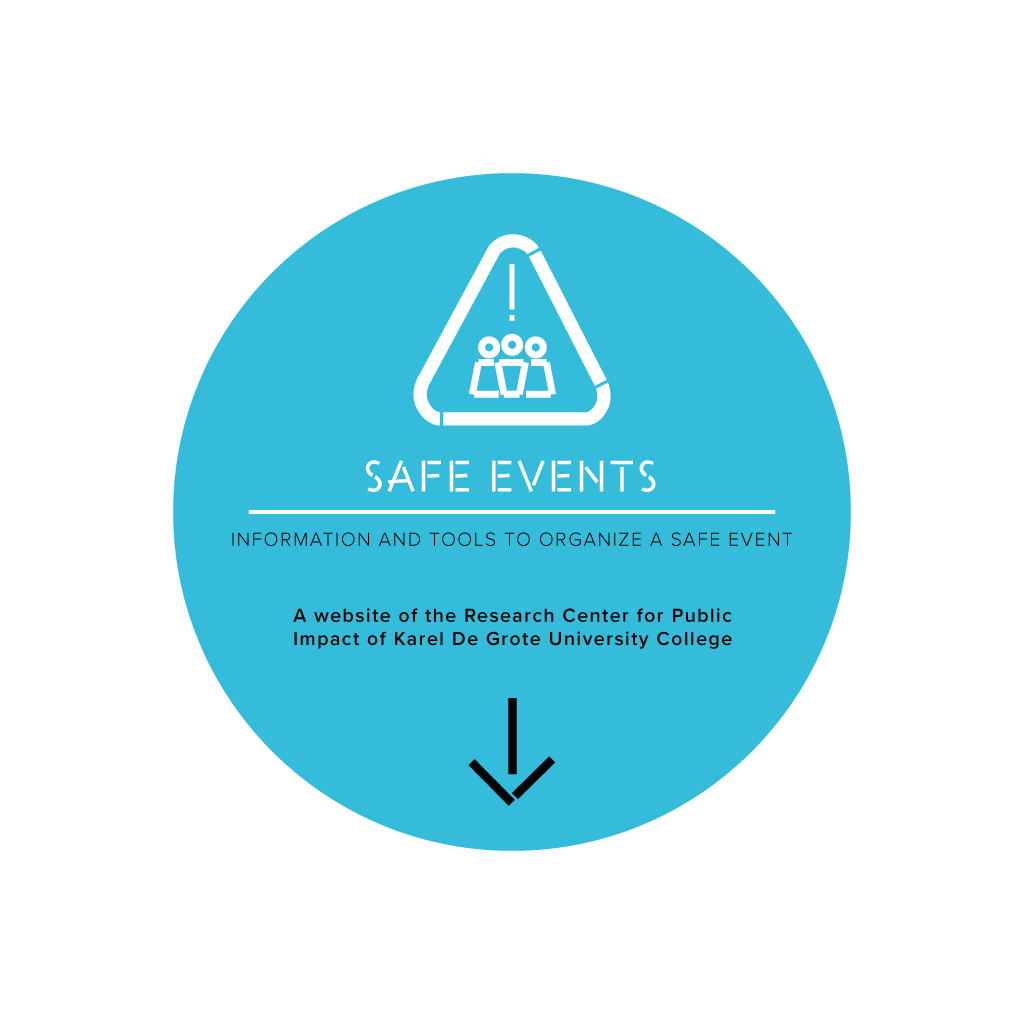Managing risks at your event
From a large-scale music festival to a small indoor party, every event involves some degree of uncertainty and potential risk. Regardless of the scale of your event, ensuring the safety and security of all visitors needs to be a top priority when planning your event.
The first step in ensuring the safety and security of your visitors is understanding all potential hazards and risks.In other words, to minimize the risk of injury or harm at your event it is important to identify and assess all potential sources of harm or adverse effects.
A Risk Analysis Model
The research center Public Impact (KdG University of Applied Sciences and Arts) has developed a Risk Analysis Model to identify and assess the risks to visitors. This model offers a systematic approach to understanding, recognizing and analyzing these risks, and can be used by every event organizer to prevent and manage them.
The Risk Analysis Model focuses on potential risks that could threaten the safety of visitors of an event. Based on elaborate qualitative research with more than 25 (event) safety and security experts and professionals from the police forces, fire and rescue services, emergency medicine, … 15 risks were identified.
The model is based on the premise that a visitor risk has three primary dimensions: probability, exposure and severity. Risk probability refers to the likelihood of a hazardous event (see below) taking place at an event and it can range from ‘highly unlikely to occur’ to ‘highly likely to occur’. Risk exposure refers to the number of visitors that are potentially affected by the risk. This number can vary between ‘one’ and ‘all visitors of the event’. Risk severity refers to the extent of damage or harm a hazard could create. It can vary between ‘no significant risk of injury’ and ‘severe injury’ or even death.
Next to understanding risks, an understanding of hazards is also crucial when undertaking a risk analysis. However, the term hazard is often confused with the term risk. In fact, hazards increase the likelihood of a risk and the number of people that are affected. A hazard could be a dangerous phenomenon, substance, human activity or condition. A hazard has the potential to cause harm. It can cause injury or other health impacts, damage or loss. Lightning at an event, for instance, is a potential hazard, while standing under a tree during a lightning strike is a risk, as it can increase the risk of fire and thus the likelihood of causing harm.
The Risk Analysis Model thus gives you an overview of the most important risks, key risk dimensions and potential hazards for an event visitor.
The Quick Risk Scan
Next to the Risk Analysis Model, we also developed a Quick Risk Scan. This scan is a free, online risk assessment tool that provides insight into the most important hazards and risks at your event. With just a few clicks of a button and 10 minutes of your time, you get a deeper understanding of the risks at your event.
Once completed, the assessment provides a detailed overview of the most important risks at your event. For each risk, an analysis of the most important hazards that influence this risk is given. The scan thus helps users identify, assess and understand their event’s risk profile and is the perfect starting point for risk management.
At the moment, the Quick Risk Scan is only available in Dutch. For more information about this tool, please contact publiekeimpact@kdg.be.

